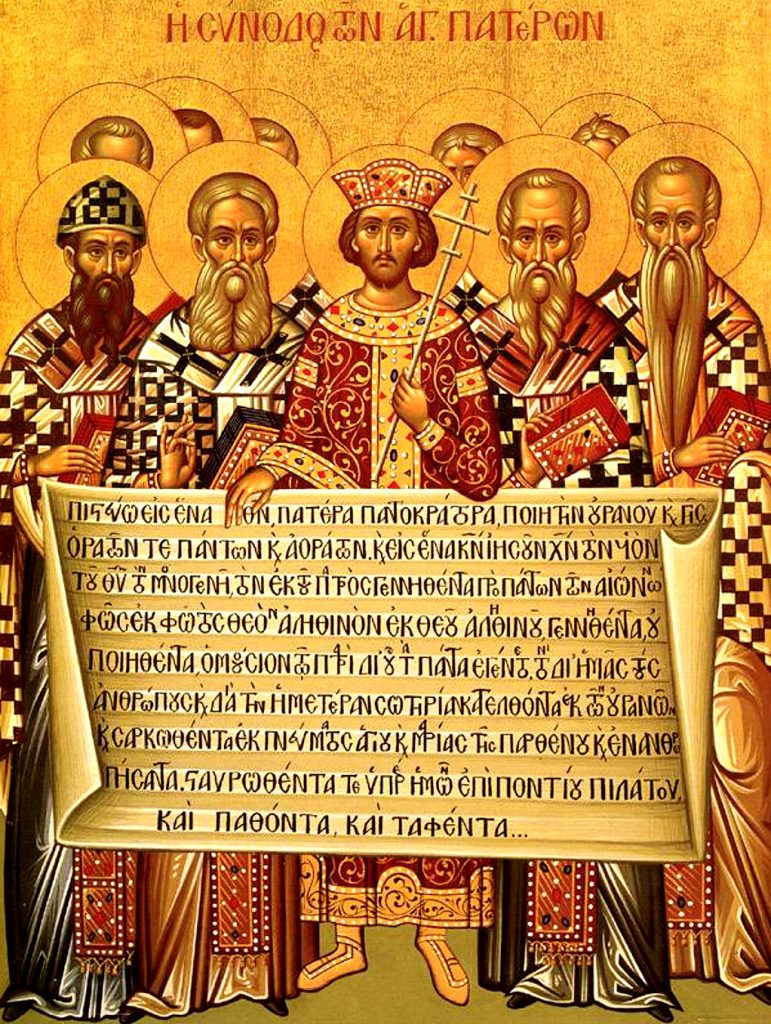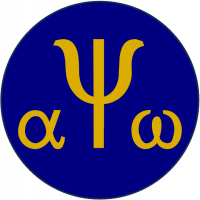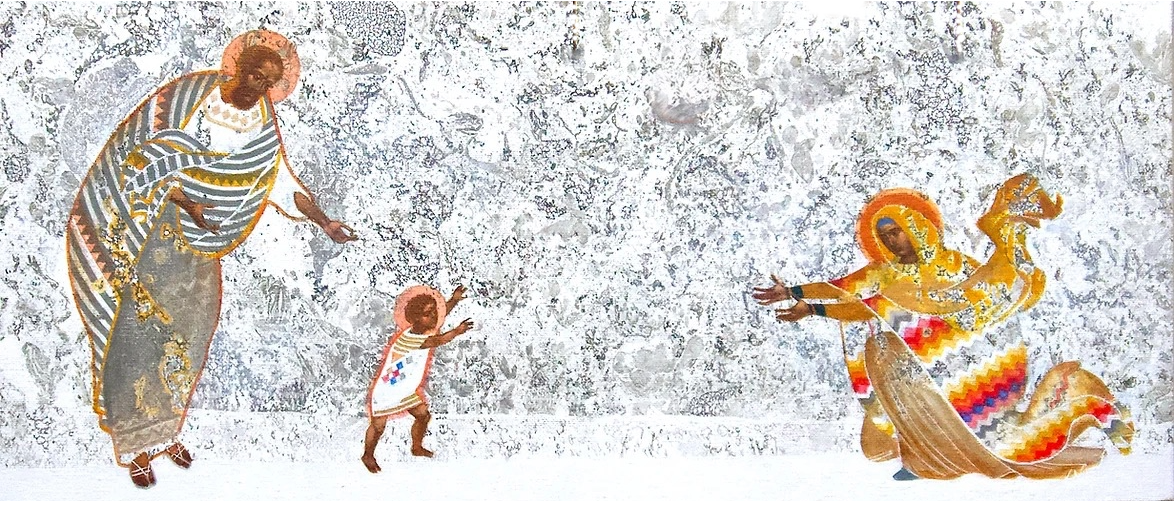
The Fourth Century Formation of the Doctrine of the Trinity
The word “Trinity” is not found in the Old or New Testaments, and yet is a key doctrine in mainstream Christianity. It was thrashed out in the heated 4th century debate which arose following the condemnation of the preaching of a popular Egyptian priest named Arius.
Despite being censured by his bishop, Arius wouldn’t back down, believing that he was just teaching the traditional understanding of the Church. The clash with his bishop escalated, resulting in the first Ecumenical Church Council at Nicaea in 325 AD.
But within a few years, the “consensus” reached at Nicaea was rejected by a number of different groups within the Church, and over more than 55 years, the search for alternative formulations continued. Numerous councils were held during this time, often aimed at producing “better” creeds, but which were received with varying degrees of success.
The end of this period of intense debate and controversy was marked by the classical expression of Trinitarian faith in the creed produced at the council of Constantinople (in 381 AD). The texts, documents and links below are provided to help you get some understanding of the debate. They are, however, best consumed as part of a study day, rather than trying to make sense of them on your own!
Key Source Texts
When studying history, it’s always good to read as many source documents as possible, rather than rely on textbook summaries, especially when it comes to contentious topics. It’s the winners who get to write the history and they don’t always represent the views of their opponents accurately.
Before going any further, you might like to take a look at a map of the Church in the fourth century to identify key locations such as Constantinople, Nicaea, Alexandria, etc
When it comes to the Fourth Century debate about the Trinity, the initial protagonist was an Alexandrian priest called Arius who had a disagreement with his bishop (Alexander of Alexandria). Two letters he wrote survive and are reproduced below. The first is his appeal to an influential foreign bishop (Eusebius of Nicomedia c.318 AD) and the second is directly to bishop Alexander (c. 320 AD).
The initially local dispute escalated to such a state that the emperor Constantine (who simply wanted “an answer”) eventually called a Church Council at Nicaea in 325 AD in an attempt to resolve the matter. The text of the original Nicene Creed from this Council in 325 AD is reproduced below.
It will be clear that this is not what is recited today in a Church! What you may know as the “Nicene Creed” is actually the creed produced at the Council of Constantinople in 381 AD (sometimes called the “Niceno Constantinopolitan” Creed).
It retains the name of Nicaea as the intention of the Council of Constantinople was not to issue a new creed, but merely clarify the position of the Spirit (which the Fathers of Nicaea had naturally not thought it necessary to spell out… at least that’s how St Gregory of Nazianzus explains it in his Epistle 102 to Cledonius).
The text of the creed from the Council of Constantinople (381 AD) is reproduced alongside that of the original Creed of Nicaea (325 AD) in the following document, so you can easily compare & contrast and spot the differences.
Many of the differences are minor and seen as insignificant, with the scholarly consensus being that the Creed of Constantinople was not simply a directly annotated version of the Creed of Nicaea, but was instead based on a different creed, and this accounts for many of the differences.
The two major differences are that the anathemas at the end of the Creed of Nicaea (325 AD) are absent from the Creed of Constantinople (381 AD), and the article on the Holy Spirit is significantly expanded in the later creed. If you’re a Western Christian you may notice that the Spirit proceeds (only) from the Father, not the Father and the Son.
Over time, it became the custom of the Western Church to add the latin word “filioque” (“and the Son”) to the creed, which contributed to the tensions which ultimately resulted in the “Great Schism” (the split between the Eastern/ Western Churches usually dated to 1054 AD).
Books about the Trinitarian Debate
A selection of suggested texts to help you understand the topic. Start at the top of the list and work down until you’ve had enough!
J.N.D. Kelly, Early Christian Doctrines (London: Continuum, 1977 – Fifth Edition)
The classic one volume textbook on the whole of the Early Church period, containing a good overview of the formation of all of the major Christian Doctrines. Chapters 9 & 10 cover the fourth century Trinitarian debate. A good place to start.
J.N.D. Kelly, Early Christian Creeds (Harlow: Longman, 1972 – Third Edition)
If you want to go into more detail on the Creeds, this volume focuses purely on the background and origins of Early Church creeds such as the Apostles’ Creed and the creeds of Nicaea (325) and Constantinople (381). Helps to place the Nicene Creed in the context of the formation and use of creeds in the Early Church period in general. As an alternative, you could skip straight to Behr’s book below…
J. Behr, The Formation of Christian Theology Volume 2: The Nicene Faith (New York: St Vladimir’s Seminary Press, 2005)
If you’re still keen to keep going, the paperback version of “Volume 2” actually comes as two separate books. Part 1 presents an overview of the 4th century background and then outlines the progress of the controversy between Nicaea and Constantinople. Particular attention is paid to the contribution of Athanasius. Part 2 examines the contribution of the three Cappadocian Fathers (Basil the Great, Gregory of Nazianzus and Gregory of Nyssa). Highly recommended.
A review from the back cover…
This is a masterpiece, comprehensive and lucid and always going into the depth and heart of the argument of the Fathers. It would be hard to find a better guide to the fourth century. It avoids clichés and “textbook” distortions of the theologies of the period, and succeeds in presenting the faith of Nicaea in all its evangelistic and transforming vigour. (Archbishop Rowan Williams)
R.P.C Hanson, The Search for the Christian Doctrine of God: The Arian Controversy, 318-381 AD (Edinburgh: T&T Clark, 1988)
Saving the best till last! Simply The one book on this topic – over 900 pages in total. Although it looks dauntingly large, it is superbly written and exceptionally clear and easy to follow (but only once you have a decent grounding and orientation in the subject, so not for the total beginner!). Ideal as a reference book to drill into specific councils or the contributions of specific individuals. Looks to be getting expensive new, but you should be able to find it secondhand.
Recommended Primary Sources
The “Source Texts” section of this page allows you to read a couple of letters of Arius and the texts of the Creeds of Nicaea and Constantinople, but to understand the (passionate) arguments against Arius and “the Arians” in more detail you have to read at least a few chunks of text by the “winners”. These include Athanasius, Gregory of Nazianzus and St Basil.
K. Anatolios, Athanasius, (London: Routledge, 2004)
Athanasius is seen as the classic defender and champion of the Nicene faith, so you really have to read a couple of his works to get a flavour for the arguments. This book contains a selection of new translations of excerpts taken from various important texts, including his “Orations against the Arians”, “On the Council of Nicaea” (De Decretis) and “Letters to Serapion”. This volume also has a very good introduction to the life and times of St Athanasius. If you’re after just one book on St Athanasius for your bookshelf, this is it.
St Gregory of Nazianzus, F. Williams and L. Wickham (translators), On God and Christ: The Five Theological Orations and Two Letters to Cledonius (New York: St Vladimir’s Seminary Press, 2002)
Contains Gregory of Nazianzus’ classic exposition and defence of the Trinity, as set out in his five sermons preached just before the council of Constantinople (381 AD). This little paperback collects the five orations together in an excellent modern translation.
St Basil the Great, On the Holy Spirit (New York: St Vladimir’s Seminary Press, 2011)
An important work in the closing stages of the Trinitarian debate. St Basil displays a more cautious approach than St Gregory of Nazianzus, and does not directly call the Holy Spirit “God” in this work. Instead, he argues that the Spirit is worthy of the same honour and worship which are due to the Father and Son (which amounts to the same thing).
W.G Rusch (translator & editor), The Trinitarian Controversy (Philadelphia: Fortress Press, 1980)
It can be difficult and/or expensive to obtain a representative collection of source documents on the topic of the Trinitarian debate. This book does a good job of gathering together a selection of translations of important documents, including:
- A number of important letters (especially those from and about Arius)
- The canons of Nicaea
- Athanasius’ Oration Against the Arians (Book 1)

